Why choose a mountain bike tour?
Mountain bike tours are perfect for cyclists who love the combination of adventure, physical challenge, and nature. Unlike road cycling, which primarily focuses on distance and speed, mountain biking involves navigating varied terrains like forests, rocky paths, and steep hills. This type of cycling requires not only endurance but also technical skills to handle obstacles like roots, rocks, and drops. The reward, however, is breathtaking views and a sense of accomplishment after conquering difficult terrain.
Mountain biking is also a highly customizable experience. Whether you’re interested in half-day excursions or multi-day tours, there’s something for every skill level. Plus, with the growth of mountain biking across Europe, you can explore some of the continent’s most beautiful and wild regions in a unique way.
Best mountain bike tour destinations in France and Europe
Europe boasts some of the most diverse and scenic mountain biking trails, with France being a major hub for mountain biking enthusiasts. Below are some of the top destinations for mountain bike tours in France and Europe.
1. The French Alps (France)
The French Alps offer some of the most iconic and challenging mountain biking trails in the world. From the famous Mont Blanc area to lesser-known trails in La Plagne or Les Deux Alpes, the Alps provide routes for all skill levels. For experienced riders, the Portes du Soleil area, which connects 12 resorts between France and Switzerland, is a must-visit. This region offers over 600 kilometers of marked trails, from easy slopes to advanced downhill tracks.
For a more relaxed ride, the valleys of Chamonix or the Tarentaise area offer scenic routes with less technical terrain but equally stunning alpine views.
2. The Pyrenees (France/Spain)
The Pyrenees, located on the border between France and Spain, provide a fantastic mix of tough climbs and scenic rides. Known for their raw beauty, the Pyrenees offer riders the chance to cycle through mountain passes, verdant forests, and along fast-flowing rivers. Popular trails include the Trans-Pyrenees route, which traverses the entire mountain range and is ideal for long-distance touring enthusiasts.
For those looking for a challenge, the area around Cauterets offers technical trails with steep descents and rocky paths, while the Ariège region offers more accessible routes suitable for intermediate riders.
3. The Dolomites (Italy)
Italy’s Dolomites are known for their jagged peaks and breathtaking landscapes, making this area one of Europe’s premier mountain biking destinations. The region offers a wide variety of trails, from beginner-friendly routes around Cortina d’Ampezzo to challenging single-track descents in the Val Gardena. The Sellaronda MTB Tour, a circular route around the Sella mountain range, is a popular choice for advanced riders looking for a technical and scenic adventure.
4. The Vosges Mountains (France)
Less known than the Alps and Pyrenees, the Vosges Mountains in eastern France are a hidden gem for mountain bikers. This region of Alsace is characterized by rolling hills, dense forests, and stunning viewpoints. The trails here are varied, ranging from easy, beginner-friendly routes to more technical downhill tracks. Gérardmer and La Bresse are popular mountain biking centers, offering marked trails for all skill levels, including family-friendly paths and adrenaline-pumping descents.
5. The Scottish Highlands (Scotland)
While not in France, the Scottish Highlands are worth mentioning for their rugged beauty and thrilling trails. This region offers a unique mountain biking experience, with trails cutting through misty moors, ancient forests, and along coastal cliffs. The Fort William area, known for hosting the UCI Mountain Bike World Cup, offers a variety of downhill and cross-country trails for all levels of riders.
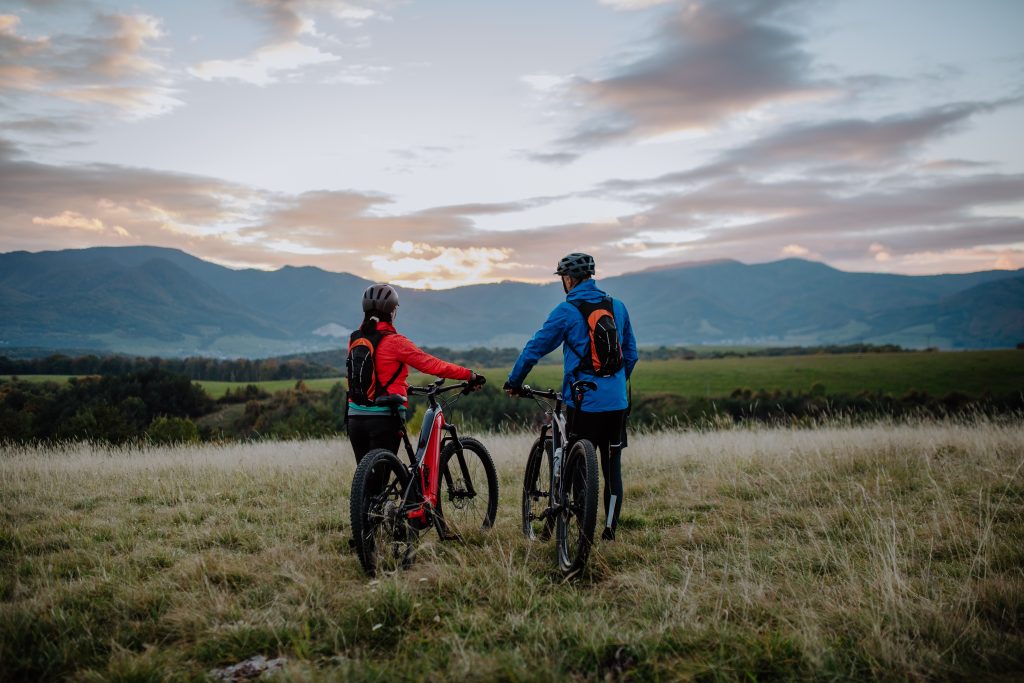
What to expect on a mountain bike tour
1. Physical challenge and skill requirements
Mountain biking is a physically demanding activity that requires both endurance and technical skills. While some trails are beginner-friendly, many mountain bike tours involve steep climbs, challenging descents, and rough terrain. It’s important to choose a tour that matches your fitness level and experience. Beginners should opt for guided tours or routes with less technical difficulty, while experienced riders may seek out advanced trails with more extreme terrain.
2. Types of terrain
Mountain bike tours can take place on a variety of terrains, including:
- Singletrack trails: Narrow paths that require technical skills to navigate sharp turns and obstacles.
- Fire roads: Wide, gravel paths that are less technical and often used for climbs or connecting trails.
- Downhill tracks: Steep, fast descents that are often found in bike parks or dedicated mountain biking resorts.
- Cross-country routes: Long-distance trails that can vary in difficulty, combining climbs, descents, and flat sections.
3. Duration and accommodation
Mountain bike tours range from half-day excursions to multi-day adventures. For shorter tours, you’ll likely be able to return to your starting point, while multi-day tours may require overnight stays in mountain huts, lodges, or camping sites. In Europe, many tours are based in or around popular ski resorts, which offer accommodations for cyclists during the summer months.
4. Guided vs. self-guided tours
If you’re new to mountain biking or unfamiliar with the area, guided tours can be an excellent way to explore trails safely. A guide will help you navigate routes, provide support, and offer local insights about the region. Self-guided tours are ideal for experienced riders who prefer more freedom and want to set their own pace.
Preparing for your mountain bike tour
1. Choosing the right bike
A sturdy mountain bike with good suspension is essential for off-road riding. Full-suspension bikes provide better control on rough terrain, while hardtail bikes (with front suspension only) are lighter and more efficient on climbs. Make sure your bike is equipped with wide, grippy tires and reliable disc brakes for handling steep descents and uneven ground.
2. Gear and equipment
Mountain biking requires specialized gear to ensure comfort and safety. Key items to bring include:
- Helmet: A high-quality, well-fitting helmet is essential for protecting your head on rough terrain.
- Gloves: Mountain biking gloves offer better grip and protect your hands in case of falls.
- Protective gear: Depending on the difficulty of the trails, you may want to wear knee and elbow pads for added protection.
- Hydration pack: Carry enough water for your ride, especially if you’re in a remote area with limited water sources.
- Repair kit: A multi-tool, spare tubes, and a pump are essential for fixing common bike issues on the trail.
3. Physical training
Mountain biking is a physically demanding activity, so it’s important to train beforehand, especially if you’re tackling challenging terrain. Focus on building cardiovascular endurance, leg strength, and core stability. Practicing on local trails before your tour will also help you get used to navigating obstacles and improve your handling skills.




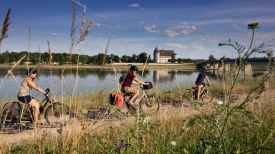 France Bike Tours
France Bike Tours
 Europe Bike Tours
Europe Bike Tours
 Europe Luxury Bike Tours
Europe Luxury Bike Tours
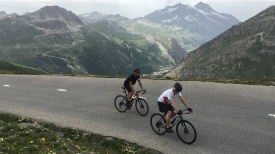 Epic Cycling
Epic Cycling
 Cycling Challenges
Cycling Challenges
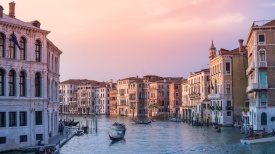 Italy
Italy
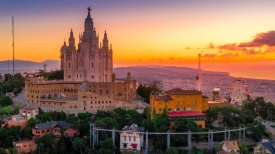 Spain
Spain
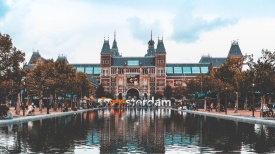 Holland
Holland
 United Kingdom
United Kingdom
 Portugal
Portugal
 Ireland
Ireland
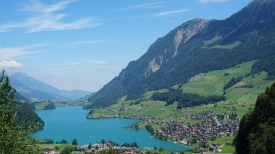 Switzerland
Switzerland
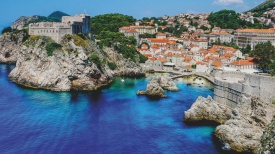 Croatia
Croatia
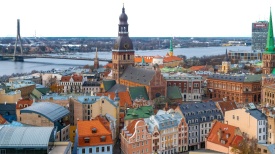 Baltic States
Baltic States



